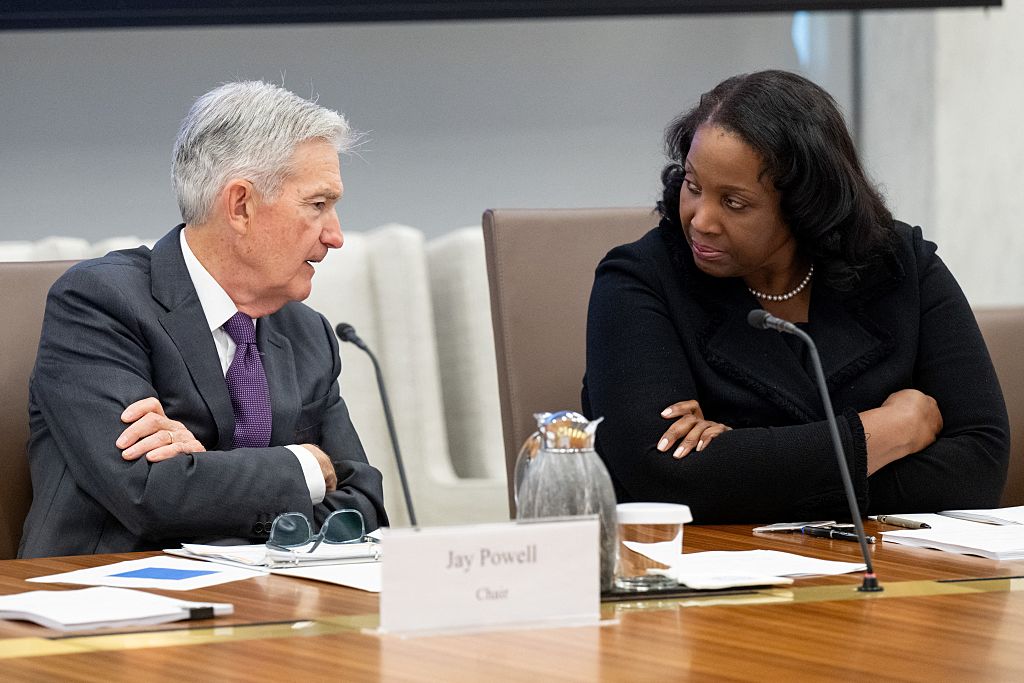Trump administration asks Supreme Court to allow for firing of Fed governor


The Trump administration on Thursday asked the Supreme Court to pause a ruling by a federal judge in Washington, D.C., that keeps Lisa Cook, a member of the Federal Reserve’s Board of Governors, in office despite President Donald Trump’s attempt to fire her in the wake of allegations that she committed mortgage fraud before joining the board. (Cook has denied the allegations, and several news outlets have since reported on financial documents that may undermine the government’s contentions.) U.S. Solicitor General D. John Sauer, the government’s top lawyer before the court, told the justices that the ruling by U.S. District Judge Jia Cobb was “yet another case of improper judicial interference with the President’s removal authority—here, interference with the President’s authority to remove members of the Federal Reserve Board of Governors for cause.”
The Trump administration’s request came just one day after the Federal Reserve’s two-day September policy meeting, at which the Fed lowered interest rates by a quarter of a point, the first cut since December 2024. Trump has criticized the chair of the Fed, Jerome Powell, for not lowering interest rates. Cook participated in the meeting and joined 10 other governors in voting for the rate cut; Stephen Miran, who was recently appointed to the board by Trump, would have imposed a larger cut.
Created by Congress in 1913 through the Federal Reserve Act, the Federal Reserve is the central bank of the United States, tasked with (among other things) conducting U.S. monetary policy – that is, taking steps to achieve big-picture economic objectives, such as “price stability, full employment, and stable economic growth.” It is also an independent government agency that – unlike most federal agencies – is not funded by Congress through the normal appropriations process but primarily through interest earned on securities that it owns.
The Federal Reserve’s main governing body is the seven-member Board of Governors. As part of the effort to insulate the Federal Reserve from political pressures, each member of the board is appointed by the president and confirmed by the Senate to serve staggered 14-year terms. The Federal Reserve Act only allows the president to remove members of the board “for cause.”
In 2023, then-President Joe Biden nominated Cook to fill a 14-year term. But the Trump administration has accused Cook of committing mortgage fraud in 2021, before she joined the board. Specifically, William Pulte, who serves as the Federal Housing Finance Agency, alleged in a criminal referral letter to the Department of Justice that, within the space of two weeks, Cook had signed mortgage agreements for two different properties – one in Michigan and one in Georgia – and affirmed that each property would serve as her primary residence for a year (or at least a year).
On Aug. 25, 2025, Trump posted screenshots on the social media site Truth Social of a letter, addressed to Cook, that fired her. Citing the mortgage fraud allegations, Trump said that he had “determined that there is sufficient cause to remove” her from the board. “At a minimum,” he continued, “the conduct at issue exhibits the kind of gross negligence in financial transactions that calls into question [Cook’s] competence and trustworthiness as a financial regulator.”
Cook went to federal court three days later to challenge her firing. On Sept. 9, Cobb issued an order that required the Federal Reserve to allow Cook to remain on the board while the litigation continues. Cobb concluded that Cook was “substantially likely” to succeed on her claim that the Trump administration had “violated the Federal Reserve Act because her purported removal did not comply with the statute’s ‘for cause’ requirement.” “The best reading of the ‘for cause’ provision,” Cobb wrote, “is that the bases for removal of a member of the Board of Governors are limited to grounds concerning a Governor’s behavior in office and whether they have been faithfully and effectively executing their statutory duties.” The “for cause” requirement, Cobb continued, “does not contemplate removing an individual purely for conduct that occurred before they began in office.”
Cook’s firing, Cobb wrote, also likely violated her rights under the Fifth Amendment’s due process clause, because she had a property interest in her position as a governor and was therefore entitled to notice and an opportunity to be heard before she was removed from it.
Cobb rejected the Trump administration’s additional contention that courts cannot weigh in on the validity of the president’s determination that there is a good reason to remove a member of the Board of Governors. If a court is “confronted with a justification offered by the President that does not clearly fall within the President’s statutory authority,” Cobb said, courts in fact have a “responsibility to review” that determination. The government’s proposed rule, she suggested, “would provide no practical insulation for the members of the Board of Governors.”
Cobb turned down the Trump administration’s request to put her ruling on hold while it appeals. The Trump administration went next to the U.S. Court of Appeals for the District of Columbia Circuit, which fast-tracked the government’s request to freeze Cobb’s order but, by a vote of 2-1, left it in place.
Judge Bradley Garcia, joined by Judge J. Michelle Childs, agreed with Cobb that Cook was likely to succeed on her claim that she did not receive all of the procedural protections to which she was entitled under the due process clause of the Constitution before she was fired. And because that claim “is very likely meritorious,” Garcia continued, the D.C. Circuit did not “need to address the meaning of ‘for cause’ in the Federal Reserve Act in this emergency posture.”
In Garcia’s view, Cook’s case is different from those of other independent agency heads whom the Supreme Court, on its emergency docket, had permitted Trump to fire while the litigation continues. For example, he wrote, those officials did not raise the same constitutional due process claim as Cook, which changes the considerations of fairness at issue in deciding whether to grant emergency relief because the D.C. Circuit has “held—in terms that squarely apply here—that the government may not ‘prioritize any policy goal over the Due Process Clause.’” Moreover, Garcia added, unlike in the cases of other agency heads, “the government does not dispute that Federal Reserve Governors are properly protected from at-will removal.”
Judge Gregory Katsas would have granted the government’s request and put Cobb’s order on hold while the litigation continues. In his view, the Federal Reserve Act’s provision that Federal Reserve governors can only be removed “for cause” gives the president broad power. When “the President specifically concluded that the allegations cast doubt on Cook’s ‘competence and trustworthiness as a financial regulator,’” Katsas wrote, “[t]hat is plainly a permissible ‘cause’ under” the law.
Katsas also rejected the majority’s conclusion that Cook has a property interest in her job as a Federal Reserve governor (and therefore has a right to procedural protections before she can be fired). “As a principal officer of the United States,” he said, “she serves in a position of public ‘trust’ that creates no property rights.”
In his 38-page filing, Sauer echoed Katsas’ argument that Cook does not have a property interest in her position. “The lower courts’ primary theory,” he wrote, “is that principal officers are akin to teachers or lower-level civil servants and can thus claim a property interest and an entitlement to notice and a hearing before removal. This theory,” he contended, “is untenable and would wreak havoc on sensitive presidential decision-making.” But in any event, Sauer continued, “whatever process is due to principal officers was provided” to Cook in this case.
Sauer also pushed back against Cobb’s conclusion that Cook’s actions before she took office could not provide the kind of “cause” needed for the president to remove her, stressing that “[t]hat rationale is so flawed that the D.C. Circuit did not adopt it and even Cook did not press it.” The “for cause” removal provision, Sauer argued, “rules out removal for no reason at all, or for policy disagreement. But so long as the President identifies a cause,” Sauer wrote, courts cannot review that determination.
Sauer indicated, in a footnote, that the government was not challenging the constitutionality of the “for cause” removal requirement itself, emphasizing instead that “the President’s removal of Cook complies with that provision.”
Finally, Sauer wrote, Cobb did not have the power to order the president to reinstate Cook to her position.
Sauer urged the justices to grant an administrative stay – that is, to put Cobb’s order on hold temporarily while they consider the government’s request. Chief Justice John Roberts issued a similar stay on Sept. 8 in the case of Rebecca Slaughter, a member of the Federal Trade Commission whom Trump fired over email in March. The full court has not yet acted on Trump’s plea to block the lower-court ruling in Slaughter’s case while her challenge to her firing continues in the lower courts.
Cases: Trump v. Cook (Independent Agencies), Trump v. Cook